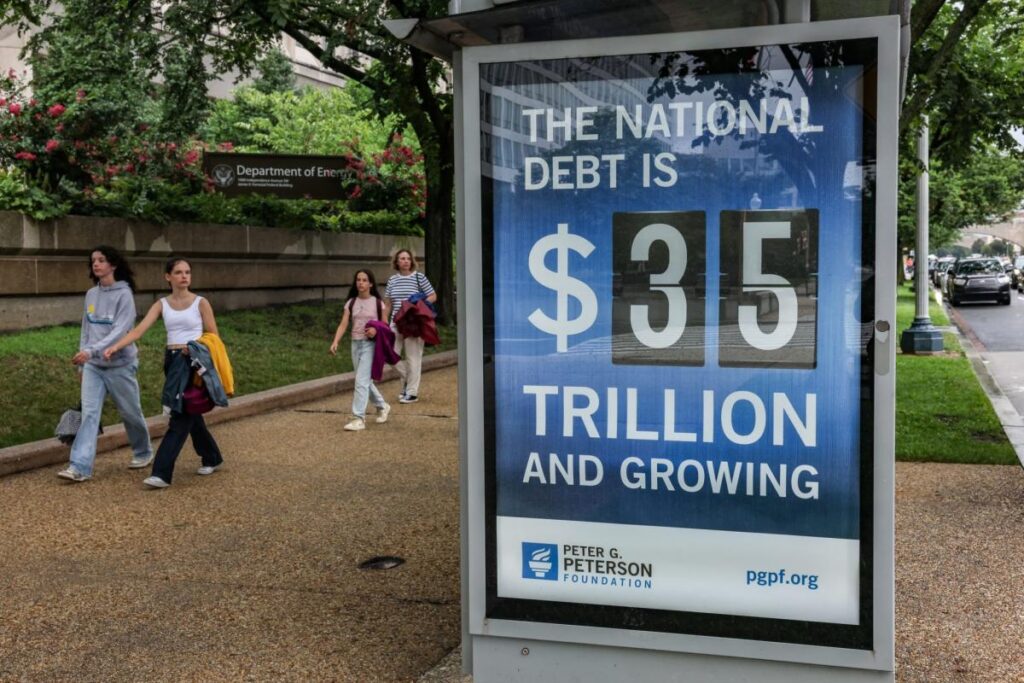In response to the Federal Reserve’s recent rate cuts, there was an expectation that bond yields would decline, thereby easing the mounting U.S. debt burden, which has reached a staggering $35.3 trillion. Apollo Global Management’s chief economist, Torsten Sløk, highlighted that the average interest expenses on this debt now cost around $3 billion daily—an increase from $2 billion just two years prior when the Fed initiated its rate-hiking campaign aimed at curbing inflation. Sløk expressed optimism that a 1% cut in interest rates could reduce these expenses to $2.5 billion per day, illustrating a potential pathway to alleviate fiscal pressure on the government.
However, the anticipated beneficial impact of these rate cuts appears to be faltering. Treasury yields initially fell ahead of the Fed’s cuts, as market participants speculated on a bold easing cycle following the preceding tightening measures. Despite this initial reaction, yields have surged post-policy meeting, with some analysts now forecasting a potential pause in further rate reductions by the Fed. Market sentiments were dampened after policymakers indicated through their “dot plot” that subsequent easing would be less aggressive than previously expected, and Chairman Jerome Powell emphasized that the recent half-point cut was not necessarily reflective of future rates.
Further complicating the scenario, a robust jobs report revealed a labor market that remains strong, with increased demand for workers and rising wages. Simultaneously, the latest consumer price index indicated that while inflation is cooling, it has proven to be more resilient than anticipated. As a consequence of these developments, the 10-year Treasury yield has experienced a significant spike, rising approximately 50 basis points to nearly 4.1%, while the 2-year Treasury yield rose by around 40 basis points to about 3.95%. These rising yields have direct implications for the Treasury Department’s ability to auction new U.S. debt, as they struggle to manage extensive budget deficits exacerbated by the costs associated with servicing this growing debt.
Government finances are increasingly strained, evidenced by the $1.8 trillion deficit recorded for the fiscal year ending on September 30. Interest expenses on U.S. debt reached $950 billion, marking a 35% increase from the previous year, primarily driven by higher interest rates. Although there is potential for Treasury yields to decline if the labor market weakens significantly, the expected fiscal policies under the next presidential administration are projected to exacerbate budget deficits, potentially negating any benefits resulting from lower interest rates.
Indeed, a recent analysis from the Penn Wharton Budget Model illuminated the forthcoming challenges, indicating that under either Donald Trump or Kamala Harris’s policies, budget deficits are poised to worsen significantly. Trump’s proposed tax and spending policies could lead to an increase of $5.8 trillion in primary deficits over the next decade based on conventional projections, while a dynamic basis that considers the economic effects of these policies estimates a $4.1 trillion increase. Conversely, a Harris administration could result in a primary deficit expansion of $1.2 trillion on a conventional basis and $2 trillion on a dynamic basis.
As economic conditions evolve, with uncertain impacts on labor markets and inflation, the question remains whether the Fed’s rate cuts will actually achieve their intended goals of reducing the burden of interest payments on U.S. debt, or if political and fiscal challenges will overshadow these monetary efforts. There is a cautious atmosphere surrounding predictions for the financial landscape, suggesting that while lower rates could provide temporary relief, substantial fiscal policy changes from the upcoming administration could bring further complications to the nation’s economic stability.

